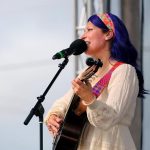
The updated bivalent COVID-19 boosters are now approved for use in children as young as 6 months of age, the U.S. Food and Drug Administration announced today. Children can receive either a Moderna or Pfizer-BioNTech bivalent booster shot, although the rules differ depending on their age and what type of vaccine they got as their primary series, the FDA said. Kids 6 months to 5 years who received the original Moderna vaccine can receive the Moderna booster at least two months after completing their first round of shots. Children 5 and older also can receive the Pfizer-BioNTech booster at least two months after they’ve completed their first series of COVID shots. The new Pfizer-BioNTech booster will replace the third dose of the primary series of shots for that vaccine for children 6 months through 4 years of age, the FDA said. But children 4 and younger who already completed the three-dose Pfizer-BioNTech primary series will not be eligible for the bivalent booster at this time, the agency said. The FDA will decide on the updated booster for this group of kids after January, when fresh data is expected. The updated boosters contain two components to protect against both the original strain of COVID and widely circulating Omicron variants. “More children now have the opportunity to update their protection against COVID-19 with a bivalent COVID-19 vaccine,… read on > read on >



























-300x200.jpg)










